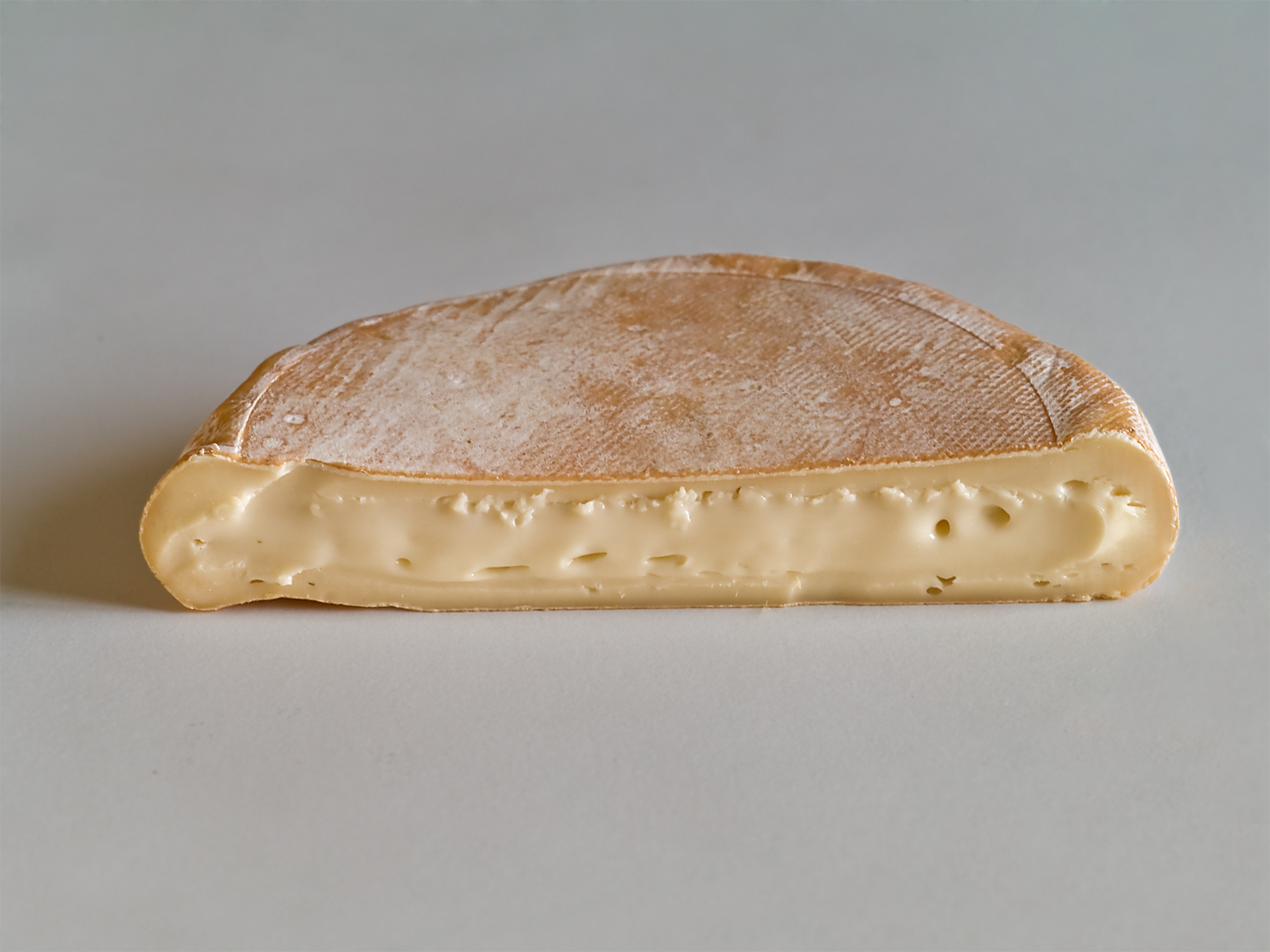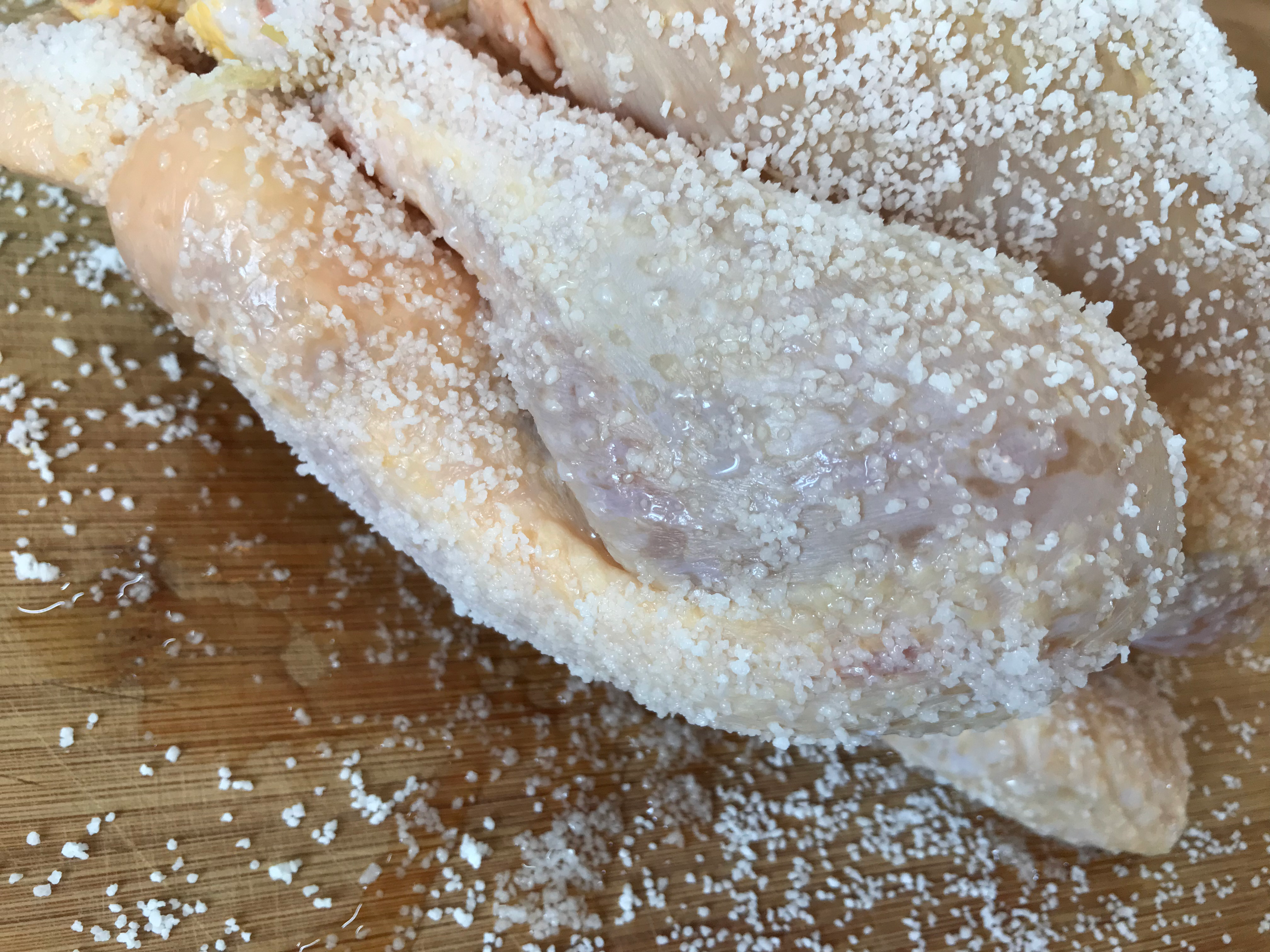|
Chevrotin
Chevrotin is a soft goat milk based cheese produced in the historical region of Savoy, (France). Since 2002 it has had an AOC designation. Production Chevrotin has been produced since the 17th century in the Alpine foothills of the Savoyard Chablais, Bauges and Aravis districts. The landscape presents difficulties to agriculture, with steep gradients, a damp climate and a thin limestone-based soil that supports a restricted vegetation. The only domesticated animals that can feed here are goats that are able to move around with the same sure-footedness as the chamois who live nearer the mountain peaks. Chevrotin is made from filtered but unpasteurised goat milk. In order to produce cheese meeting the AOC criteria, the milk must be produced by a herd of 80% alpine breed goats. [...More Info...] [...Related Items...] OR: [Wikipedia] [Google] [Baidu] |
Chevrotin Des Aravis (avril 2021) - 2
Chevrotin is a soft Goat milk cheese, goat milk based cheese produced in the historical region of Savoy, (France). Since 2002 it has had an Appellation d'origine contrôlée, AOC designation. Production Chevrotin has been produced since the 17th century in the French Prealps, Alpine foothills of the Savoyard Chablais, Bauges and :fr: Aravis, Aravis districts. The landscape presents difficulties to agriculture, with steep gradients, a damp climate and a thin limestone-based soil that supports a restricted vegetation. The only domesticated animals that can feed here are goats that are able to move around with the same sure-footedness as the chamois who live nearer the mountain peaks. Chevrotin is made from filtered but unpasteurised goat milk. In order to produce cheese meeting the AOC criteria, the milk must be produced by a herd of 80% alpine breed goats. [...More Info...] [...Related Items...] OR: [Wikipedia] [Google] [Baidu] |
Goat Milk Cheese
Goat cheese, or chèvre ( or ; from French ''fromage de chèvre'' 'goat cheese'), is cheese made from goat's milk. Goats were among the first animals to be domesticated for producing food. Goat cheese is made around the world with a variety of recipes, giving many different styles of cheese, from fresh and soft to aged and hard. Properties History Goats produce high quality, nutrition-rich milk under even the most difficult environments making them valuable to arid or mountainous areas where cows and sheep can not survive. Goats were one of the earliest animals domesticated to suit human needs- more specifically milk production- going back to 8,000 B.C., 10,000 years ago. Goat cheese has been made for at least as far back as 5,000 B.C. Meanwhile, the first documented proof of humans making cheese is 7,500 years ago in Poland. Nutritional value Goat milk has a higher proportion of medium-chain fatty acids such as caproic and caprylic which contributes to the characteri ... [...More Info...] [...Related Items...] OR: [Wikipedia] [Google] [Baidu] |
French Cheeses
This is a list of French cheeses documenting the varieties of cheeses, a milk-based food that is produced in wide-ranging flavors, textures, and forms, which are found in France. In 1962, French President Charles de Gaulle asked, "How can you govern a country which has two hundred and forty-six varieties of cheese?" There is immense diversity within each variety of cheese, leading some to estimate between 1,000 and 1,600 distinct types of French cheese. French cheeses are broadly grouped into eight categories, 'les huit familles de fromage'. Protected designation of origin Under the Common Agricultural Policy of the European Union, certain established cheeses, including many French varieties, are covered by a protected designation of origin (PDO), and other, less stringent, designations of geographical origin for traditional specialities, such as the EU Protected Geographical Indication. The systems has largely replaced national systems, such as the French appellation d'origine con ... [...More Info...] [...Related Items...] OR: [Wikipedia] [Google] [Baidu] |
Cow's Milk
Milk is a white liquid food produced by the mammary glands of mammals. It is the primary source of nutrition for young mammals (including breastfed human infants) before they are able to digest solid food. Immune factors and immune-modulating components in milk contribute to milk immunity. Early-lactation milk, which is called colostrum, contains antibodies that strengthen the immune system, and thus reduces the risk of many diseases. Milk contains many nutrients, including protein and lactose. As an agricultural product, dairy milk is collected from farm animals. In 2011, dairy farms produced around of milk from 260 million dairy cows. India is the world's largest producer of milk and the leading exporter of skimmed milk powder, but it exports few other milk products. Because there is an ever-increasing demand for dairy products within India, it could eventually become a net importer of dairy products. New Zealand, Germany and the Netherlands are the largest exporters ... [...More Info...] [...Related Items...] OR: [Wikipedia] [Google] [Baidu] |
Reblochon
Reblochon () is a soft washed-rind and smear-ripened French cheese made in the Alpine region of Haute-Savoie from raw cow's milk. It has its own AOC designation. Reblochon was first produced in the Thônes and Arly valleys, in the Aravis massif. Thônes remains the centre of Reblochon production; the cheeses are still made in the local cooperatives. Until 1964 Reblochon was also produced in Italian areas of the Alps. Subsequently, the Italian cheese has been sold in declining quantities under such names as Rebruchon and Reblò alpino. History Reblochon derives from the word "reblocher" which when literally translated means "to pinch a cow's udder again". This refers to the practice of holding back some of the milk from the first milking. During the 14th century, the landowners would tax the mountain farmers according to the amount of milk their herds produced. The farmers would therefore not fully milk the cows until after the landowner had measured the yield. The milk that remai ... [...More Info...] [...Related Items...] OR: [Wikipedia] [Google] [Baidu] |
Munster Cheese
Munster (), Munster-géromé, or ( Alsatian) Minschterkaas, is a soft cheese with a subtle taste, made mainly from milk first produced in the Vosges, between the Alsace-Lorraine and Franche-Comté regions in France. The name "Munster" is derived from the Alsace town of Munster, where, among Vosgian abbeys and monasteries, the cheese was conserved and matured in monks' cellars. History This cheese originated in the Admodiation, an area on the top of the Vosgian mountains of France, named "Chaumes" or "Les grandes Chaumes" (comitatus Calvomontensis). ''Calvomontensis'' is the Latin for a mountaintop without woods. As early as 1371, and possibly before, these territories were occupied by cattle herds driven by men, called "''marcaires''" (from the Alsatian "''Malker''", Milker in English), pastured there between May and September. When the herds returned to their valleys, the cattle herdsmen first paid the fees and tithes to the religious and political owners of the summe ... [...More Info...] [...Related Items...] OR: [Wikipedia] [Google] [Baidu] |
Protected Designation Of Origin
The protected designation of origin (PDO) is a type of geographical indication of the European Union and the United Kingdom aimed at preserving the designations of origin of food-related products. The designation was created in 1992 and its main purpose is to designate products that have been produced, processed and developed in a specific geographical area, using the recognized know-how of local producers and ingredients from the region concerned. The list below also shows other geographical indications. Features The characteristics of the products protected are essentially linked to their terroir. The European or UK PDO logo, of which the use is compulsory, documents this link. European Regulation 510/2006 of 20 March 2006 acknowledges a priority to establish a community protection system that ensures equal conditions of competition between producers. This European Regulation is intended to guarantee the reputation of regional products, adapt existing national protections t ... [...More Info...] [...Related Items...] OR: [Wikipedia] [Google] [Baidu] |
Brining
In food processing, brining is treating food with brine or coarse salt which preserves and seasons the food while enhancing tenderness and flavor with additions such as herbs, spices, sugar, caramel or vinegar. Meat and fish are typically brined for less than twenty-four hours while vegetables, cheeses and fruit are brined in a much longer process known as pickling. Brining is similar to marination, except that a marinade usually includes a significant amount of acid, such as vinegar or citrus juice. Brining is also similar to curing, which usually involves significantly drying the food, and is done over a much longer time period. Meat Brining is typically a process in which meat is soaked in a salt water solution similar to marination before cooking. Meat is soaked anywhere from 30 minutes to several days. The amount of time needed to brine depends on the size of the meat: more time is needed for a large turkey compared to a broiler fryer chicken. Similarly, a large roast must ... [...More Info...] [...Related Items...] OR: [Wikipedia] [Google] [Baidu] |
Chamois
The chamois (''Rupicapra rupicapra'') or Alpine chamois is a species of goat-antelope native to mountains in Europe, from west to east, including the Alps, the Dinarides, the Tatra and the Carpathian Mountains, the Balkan Mountains, the Rila–Rhodope massif, Pindus, the northeastern mountains of Turkey, and the Caucasus. The chamois has also been introduced to the South Island of New Zealand. Some subspecies of chamois are strictly protected in the EU under the European Habitats Directive. Names The English name comes from French . The latter is derived from Gaulish ''camox'' (attested in Latin, 5th century), itself perhaps borrowing from some Alpine language (Raetic, Ligurian). The Gaulish form also underlies German , , , Italian , Ladin . The usual pronunciation for the animal is or , approximating the French pronunciation . However, when referring to chamois leather, and in New Zealand often for the animal itself, it is , and sometimes spelt ''shammy'' or ''chamy'' ... [...More Info...] [...Related Items...] OR: [Wikipedia] [Google] [Baidu] |
Sure-footedness
Sure-footedness is the ability, especially when hiking or mountain climbing, to negotiate difficult or rough terrain safely. Such situations place demands on a person's coordination and reserves of strength as well as requiring sufficient appreciation of the terrain. A person who is sure-footed is thus unlikely to slip or stumble, and will have a good head for heights when required. On many hiking trails and mountain tours, sure-footedness is assumed to be a prerequisite without ever being defined. The term is frequently used in the literature presumably to ensure that the reader is made sufficiently aware that, under certain circumstances, one false step may lead to serious consequences. Required attributes Although there is no standard definition of sure-footedness, [...More Info...] [...Related Items...] OR: [Wikipedia] [Google] [Baidu] |
Goats
The goat or domestic goat (''Capra hircus'') is a domesticated species of Caprinae, goat-antelope typically kept as livestock. It was domesticated from the wild goat (''C. aegagrus'') of Southwest Asia and Eastern Europe. The goat is a member of the animal family Bovidae and the tribe Caprini, meaning it is closely related to the sheep. There are over 300 distinct breeds of goat.Hirst, K. Kris"The History of the Domestication of Goats".''About.com''. Accessed August 18, 2008. It is one of the oldest domesticated species of animal, according to archaeological evidence that its earliest domestication occurred in Iran at 10,000 calibrated calendar years ago. Goats have been used for milk, Goat meat, meat, Animal fur, fur, and Animal skin, skins across much of the world. Milk from goats is often turned into goat cheese. Female goats are referred to as ''does'' or ''nannies'', Entire (animal), intact males are called ''bucks'' or ''billies'', and juvenile goats of both sexes are ... [...More Info...] [...Related Items...] OR: [Wikipedia] [Google] [Baidu] |
_-_2.jpg)

.jpg)



_Chamois.png)
